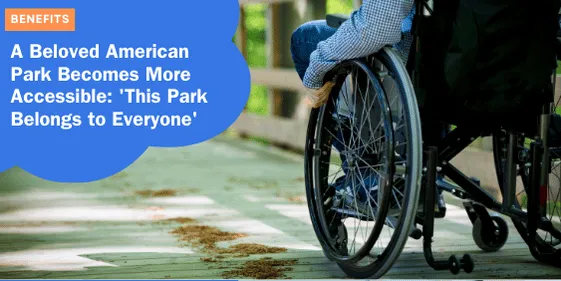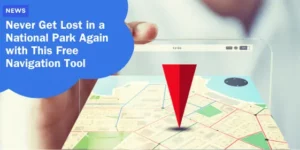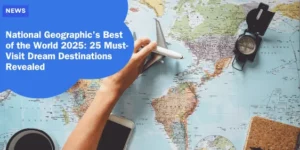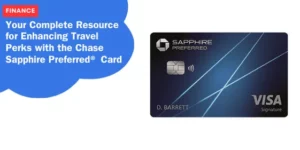A Beloved American Park Becomes More Accessible: ‘This Park Belongs to Everyone’

On a sunny afternoon in the Great Smoky Mountains National Park, Carly Pearson’s hiking gear included an unusual but essential companion: an all-terrain wheelchair equipped with three wheels.
Pearson, who is paralyzed below the waist due to an injury she sustained as a wildland firefighter, adeptly navigated around tree roots, muddy patches, and fellow hikers, all on her way to a nearby waterfall.
Such a feat would have been unthinkable just two years ago.
Nevertheless, thanks to a concerted effort by the National Park Service and several partners, adaptive programming has been introduced to make the nation’s most-visited national park more accessible for visitors with disabilities.
Carly Pearson’s Journey and Adaptive Programming’s Impact
Pearson’s story is a testament to resilience and the evolving opportunities for accessibility in national parks.
Speaking about her experience, Pearson, who serves as an Americans with Disabilities Act coordinator for Knox County in Tennessee and volunteers with the adaptive recreation nonprofit Catalyst Sports, expressed her gratitude.
“Now, I can hike to Cataract Falls with my daughter and say, ‘Look at this waterfall,’ giving her the chance to experience nature firsthand,” Pearson shared.
This adaptive programming initiative, which debuted in 2023, has significantly expanded within a short time.
This inclusive philosophy has transformed the park into a welcoming environment for everyone, regardless of physical limitations.
Comprehensive Accessibility: Adaptive Programming and Equipment
Ranger-Led Adaptive Programming
The park, which straddles the border between North Carolina and Tennessee, offers an array of adaptive ranger-led programs designed to cater to various interests and abilities.
These programs will run from June 8 to October 5, allowing visitors to participate in bike rides, hikes (including one that incorporates a boat tour), as well as newly introduced kayaking and camping options.
Detailed information on these activities is available on Catalyst Sports’ website.
GRIT Freedom Chairs: Independence and Mobility
For those who prefer exploring the park independently, four GRIT Freedom Chairs—three designed for adults and one junior chair—are available for checkout.
These all-terrain wheelchairs enable users to traverse approximately 12 miles of trails spread out across different sections of the park.
However, it is essential to note that operating the GRIT Freedom Chairs requires some upper-body mobility.
“If you don’t have the use of your arms, the levers can be removed, allowing someone else to push it,” Corrigan noted, emphasizing the chairs’ adaptability.
Regardless, all users are required to have a companion, such as a friend or a park volunteer, to ensure their safety and assistance.
Registration and Availability
Signing Up for Adaptive Programming
Participants interested in the ranger-led activities can register online.
Typically, these programs are available in both morning and afternoon sessions, providing flexibility to accommodate various schedules.
This approach ensures that more visitors can enjoy the park’s beauty while engaging in activities tailored to their needs.
Wheelchair Reservations and First-Come, First-Served System
The GRIT Freedom Chairs are available at the park’s Sugarlands Visitor Center.
On Mondays and Tuesdays, these wheelchairs are issued on a first-come, first-served basis.
However, on Wednesdays, Fridays, Saturdays, and Sundays, visitors can make specific time reservations.
Reservations for this year opened on a recent Saturday, and as of October 1, the availability will revert to first-come, first-served, although this policy might change and would be updated on the park’s official website.
Due to high demand, especially witnessed last summer, these chairs often experience more requests than availability.
To meet this growing need, the park is in the process of training additional volunteers and considering the addition of more equipment.
The Broader Importance of Accessibility in National Parks
Providing accessible options in national parks is not merely about compliance; it is about inclusivity and ensuring everyone has the opportunity to connect with nature.
The ability to experience natural beauty should be universal, transcending physical limitations.
By creating adaptive programs and offering specialized equipment like the GRIT Freedom Chairs, the National Park Service sets a precedent for other parks to follow.
A Collaborative Effort: Uniting for Greater Accessibility
The strides made in the Great Smoky Mountains National Park result from a collaborative effort involving multiple partners and organizations.
Catalyst Sports, an adaptive recreation nonprofit, plays an instrumental role in this initiative.
Through their partnership with the park, they bring invaluable expertise and resources to make these adaptive programs possible.
Future Prospects: Continued Expansion and Upgraded Facilities
As the demand for accessible outdoor experiences grows, so does the need for further investment in adaptive resources and infrastructure.
The high demand for GRIT Freedom Chairs last summer underscores the necessity for more equipment and trained personnel.
Efforts are underway to address these challenges, including the potential introduction of additional adaptive equipment and the expansion of volunteer training programs.
Conclusion: Embracing Inclusivity in National Parks
The transformation witnessed in the Great Smoky Mountains National Park serves as an encouraging example of what can be achieved when accessibility is prioritized.
By incorporating adaptive programming and specialized equipment, the park has opened its doors wider, enabling people like Carly Pearson to enjoy its natural splendor.
This initiative is a step towards ensuring national parks truly belong to everyone.
For those planning to visit, it is advisable to check the park’s official website and Catalyst Sports for the latest updates on adaptive programming and equipment availability.
As more parks adopt similar inclusive practices, the hope is that nature’s awe-inspiring experiences become accessible to all, demonstrating that these natural treasures are, indeed, for everyone to cherish and enjoy.






